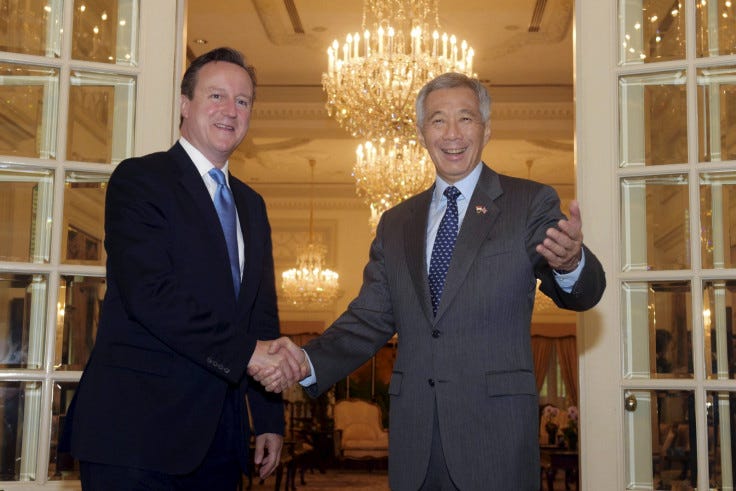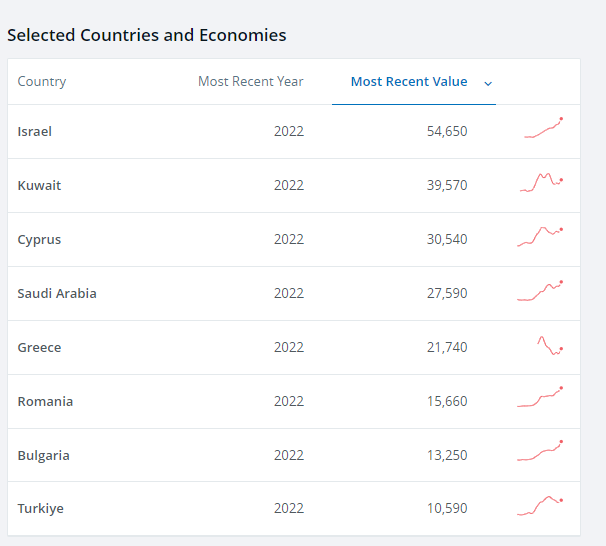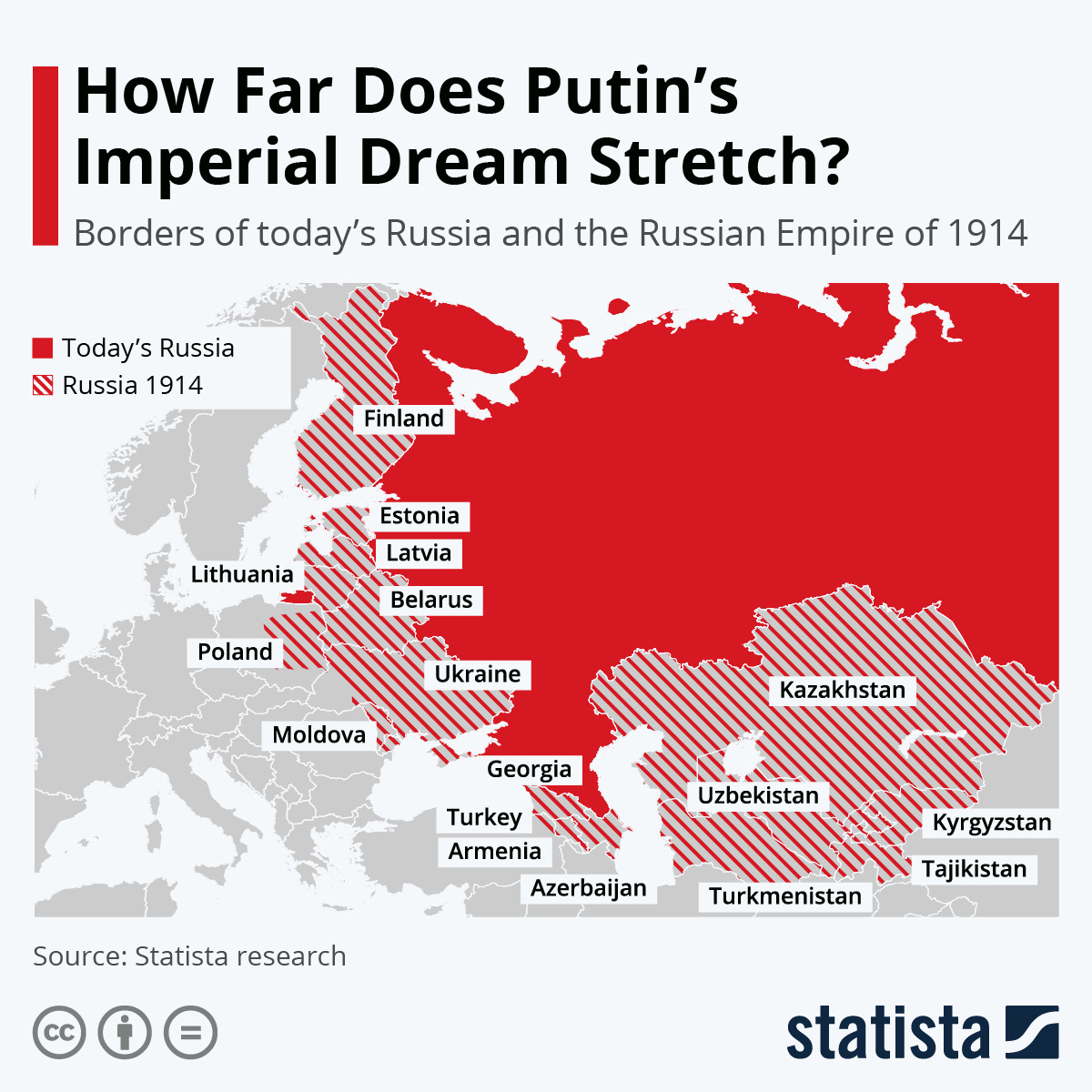Are there Former Colonies or Vassal States with Similar or Better Living Standards than their Previous Overlord?
There's a few... but not many

So I follow Matthew Yglesias on Twitter and saw his tweet:
What I found intriguing was that this was one of the few examples were the former vassal/colony is now richer than the overlord or metropole (Greek for “mother city”).
In 1822, Haiti completely annexed and conquered the Dominican Republic (then called Santo Domingo).
Haiti annexed Dominican Republic and ruled the entire island of Hispaniola for 22 years from February 9th 1822 to February 27th, 1844. In fact, Dominican Republic Independence day is celebrated on February 27th to celebrate Dominican independence from Haiti.
Seeing this post made me think: how many former colonies/vassals are richer than the metropole?
The answer is not many. But there are a few. Including the fact that the average American makes more money than the average Brit.
I started from the late 15th-early 16th century, since that was when imperialism got more popular with the Europeans, starting with Portuguese influence.
Let’s arrange the Imperial powers in order of GDP of the current country:
Omani Empire: (Oman GDP: $115B)
From 1507 to 1650, Muscat, Oman’s capital was controlled by Portugal until the Omani Arabs successfully ousted them. They also seized Portuguese forts in East Africa, like Fort Jesus in Mombasa in modern day Kenya.
During the 1600s to 1850s, prior to the European Berlin Conference & the scramble for Africa, Oman transformed from collection of ports across Arabia India, & East Africa into a maritime empire. Oman’s main export was selling cash crops made by slaves and East African slaves, fueling the lesser-known East African slave trade.
.
In Oman, the ruling elite were Arab, but the empire was multi-ethnic. Many of the slave traders and bureaucrats were Afro-Arabs who spoke Swahili like Tibbu Tip - the slave trader who managed slave plantations in East Congo before Belgian King Leopold kicked him out. The merchants and treasury department were Indian. The empire was a multi-ethnic empire of East Africans, South Asians, Persians, and Arabs. Descendants of East African slaves still exist today in Pakistani & Indian villages (Siddi people) and Iran.
The Arabs of Oman’s territories spanned from Gwadar in Pakistan to coastal towns in Kenya, Tanzania, Mozambique, and Madagascar, as well as parts of Uganda, Congo, Bahrain, Zanzibar, Comoros, the UAE, and coastal cities in Iran.
The empire was split in 1856 between an African section (Sultanate of Zanzibar) and a Middle Eastern section (Sultanate of Oman). By 1885, European influence, propelled by the Berlin Conference, shifted power away from the Omani Arabs in East Africa. By 1891, Oman itself was a British Protectorate.
None of Oman’s former colonies & vassals are richer than Oman today with the exception of the United Arab Emirates & Bahrain.
Portuguese Empire (Portugal GDP: $252B)
Portugal was the original European colonizer, and it was by far the poorest and least industrialized European Imperial power. Even today, Portugal is poorer than the rest of the former imperialist Western Europe.
Portugal colonized Brazil, Angola, Mozambique, Guinea-Bissau, Cape Verde, Sao Tome & Principe, East Timor, Macau, Goa in India, and a few other places that Portugal eventually lost.
The only former Portuguese colony that is richer than Portugal, is the gambling city-state of Macau in China.
Persian Empire (Iran GDP: $390B)
Iran's borders and control over territories have fluctuated over time. Iran’s land reached nearly its greatest extent in the 1740s Afsharid Dynasty.
Persia has conquered the countries we consider modern day Iran, Azerbaijan, Georgia, Bahrain, Armenia, parts of Georgia, Oman, Iraq, Kuwait, Afghanistan, Turkey, Syria, Pakistan, Turkmenistan, and Uzbekistan.
Iran was a force to be reckoned with until 1800s. Turkey, Russia, and Britain crushed and carved out Iran’s territories.
Today, literally all of these countries have their average citizen richer than an Iranian except Syria, Pakistan, Afghanistan, and Uzbekistan.
Egyptian Empire (Egypt’s GDP: $477B)
Even though in the 1800s, Egypt was a Province of Turkey, it operated autonomously under the Muhammed Ali Dynasty. Before the European Berlin Conference of 1885, Egypt trying to conquer all parts of Africa where the Nile river flowed from & the Red Sea Coast. Egypt was able to conquer parts of modern day Sudan, South Sudan, Eritrea, Djibouti, small parts of Ethiopia & Somalia, and parts of Northwest Uganda like Lado and Wadelai which were slave hubs for Egyptian forces.
Muhammed Ali’s Egypt failed in its quest after losing a war to Ethiopia.
None of Egypt’s African colonies/vassals are richer than Egypt today. But the Middle eastern territories are richer than Egypt (except Yemen and Syria).
Belgian Empire (Belgium GDP: $578B)
All of Belgium’s colonies are no where close to Belgian incomes - Rwanda, Burundi, and Democratic Republic of Congo. At least Rwanda is growing fast, (albeit from a very low base).
Turkish Empire (Turkey GDP: $906B)
Ottoman Turkey conquered the Balkans in Europe, most of North Africa, and the Middle East. Turkey was initially stronger than the European powers, but once Western Europe experienced the industrial revolution, it slowly ripped off territory from Turkey until the Turkish empire was destroyed after WW1.
The European countries that are part of the EU (Bulgaria, Romania, Greece, and Cyprus), the oil states of Saudi Arabia & Kuwait, and Israel which was part of Turkish Syria are all richer than Turkey.
Here are all the poorer former Ottoman colonies:
The Balkans: Albania, Bosnia, Montenegro, Serbia
The Middle East & North Africa: Palestine, Syria, Jordan, Iraq, Yemen Lebanon, Algeria, Tunisia, Libya, Sudan, Eritrea, and Egypt.
Dutch Empire (Netherlands GDP: $991B)
Netherlands’ main colonies were Suriname & Indonesia which are both significantly poorer than the Netherlands. Netherlands also briefly had parts of other countries but they were taken over by other imperial powers. New York was also a colony of Netherlands, then called “New Amsterdam”.
The average New Yorker makes $75K while the average Dutch person makes $57K ($66K adjusted for purchasing power parity). So I guess, New York, is kind of a territory that is richer than the metropole.
Spanish Empire: (Spain: $1.4T GDP)
No country that was a former colony of Spain has a higher income per capita than Spain. But every state of the United States that was a former colony of Spain is richer than Spain:
California: $77,036
Colorado: $75,722
Wyoming: $73,248
Florida: $64,806
Texas: $62,586
Oregon: $62,303
Nevada: $62,085
Utah: $59,457
Arizona: $58,442
Idaho: $56,614
New Mexico: $52,194
Spain: $31, 680 ($46K adjusted for purchasing power parity)
Mexican Empire (Mexico GDP: $1.4T)
Mexico after independence was an empire that also had parts of the modern USA and Central America (Costa Rica, El Salvador, Guatemala, Honduras, and Belize).
All the American states that I mentioned in Spain are richer than Mexico. Also, was part of the Mexican Empire, and now Costa Ricans are richer.
Italian Empire (Italy GDP: $2T)
Every former Italian colony is poorer than Italy - Eritrea, Somalia, and Libya.
Russian Empire (Russia GDP: $2.2T)
Russia, during the days of the Russian Empire had the Central Asian Stan countries, Alaska, the Caucasus region, the Baltic states, Ukraine, Belarus, Finland and Poland. During the Soviet Union, Poland was independent (though a satellite state) and Finland was independent.
After the Soviet Union died, the Baltic states, Poland, and Finland joined the European Union and they are all more prosperous than Russia right now.
Also Alaskans make nearly six fold the average Russian.
French Empire (France GDP: $2.8T)
Every colony France had (Haiti, African colonies and Southeast Asian colonies) is poorer than France.
If we reach a bit, the former French North American territories are richer than France. This means Quebec and the Louisiana Purchase states (modern day Arkansas, Iowa, Missouri, Kansas, Oklahoma, Nebraska, Minnesota, Louisiana, the Dakotas, and Montana).
North Dakota: $70.4K
Minnesota: $68.8K
South Dakota: $68.2K
Nebraska: $64.3K
Montana: $61K
Kansas: $60.4K
Iowa: $60.2K
Missouri: $57.8K
France: $45.86K ($57.1K at purchasing power parity)
Oklahoma: $56.3K
Louisiana: $54.5K
Arkansas: $52.6K
Quebec: $46.3K USD (62.9K CAN) ($50.5K at purchasing power parity using (USD to PPP multiple)
British Empire: (UK: $3.1T)
The only former colonies & protectorates that have exceeded Britain in average income per capita are:
- Anglosphere nations (United States, Australia, Ireland and Canada)
- Petrostates (United Arab Emirates & Qatar)
- City states (Singapore, and Hong Kong)
- Israel
No African, Caribbean, or Latin American colony has exceeded Britain. Nether do other Middle eastern colonies like Jordan, Cyprus, or Iraq.
New Zealand is the only Anglosphere settler country that hasn’t exceeded Britain yet.
Petrostates that aren’t richer than Britain include Kuwait and Bahrain.
Mughal Empire: (India: $3.4T)
Interestingly, the Mughal Empire was founded by a man named Babur, a chieftain from Uzbekistan.
The Mughal empire controlled most of India, parts of Afghanistan, Pakistan, and Bangladesh from 1526 to 1857. The Europeans gradually shrunk the empire.
Bangladeshis now have higher incomes per capita than Indians and Pakistani. Bangladesh used to be East Pakistan when Pakistan split from India. In fact Pakistan tried to stop Bangladeshi independence by genociding the population.
German Empire (Germany: $4.1T)
Germany used to have colonies until it lost WW1 including Namibia, Tanzania, Rwanda, Burundi, Cameroon, Togo, Papua New Guinea, St. Thomas, the Marshall Islands, Samoa, East Timor, and the Jiaozhou Bay in China. After WW1 all of these territories were given to UK, Belgium, France, South Africa, Australia, or America. No former colony of Germany is richer than Germany today.
Japanese Empire: (Japan’s GDP: $4.2T)
Japan colonized Taiwan in 1895 and Korea (North & South) in 1905. Japan then occupied parts of Mainland China, Hong Kong, Macau, Indonesia, Burma, Malaysia, Singapore, and the Philippines and took them from the West in the 1930s and 1940s until WW2 ended. On the good side, Japan allowed these colonies more self rule. On the horrific side, Japan murdered 10M Asians. NYT called this the “Asian Holocaust”.
With the exception of South Korea & Taiwan (actual former Japanese colonies) and Hong Kong, Singapore, and Macau (brief occupancies), Japanese colonies and occupations are poorer than Japan.
**Note: Taiwan and South Korea are poorer than Japan on a income per capita at current exchange rates, but are richer than Japan at purchasing power parity (PPP).
Japan GNI per capita: $42,440 ($48,870 at PPP)
South Korea GNI per capita: $35,990 ($50,730 at PPP)
Taiwan GNI per capita: $33,565 ($72,490 at PPP)
The Great Qing (China GDP: $18T)
Before Japan industrialized and Europe flooded China with Opium, China was a great empire. In the Qing era, Tibet, Mongolia, the Island of Taiwan, Macau, and Hong Kong were all parts of China.
In addition, China had overlordship over Korea, Kazakhstan, Kyrgyzstan, Afghanistan, Burma, Thailand, Bhutan, Vietnam, and Japan. All these states paid tribute to China.
Thanks to Deng Xiaopeng’s market reforms, Chinese people are richer than most of these places except for:
Taiwanese (a former territory of Qing that China wants to reunify with)
South Koreans and Japanese (former tributary or vassal states of Qing)
Conclusion
We have very few examples of colonies exceeding the incomes of their metropoles. There’s over 100 countries of former colonies still poorer than the metropole when comparing Europe to their Latin American, Caribbean, African , Central Asian or Caucuses. However, there are some middle eastern and south east Asian countries that have exceeded their Turkish or European colonizer.
In addition, Japanese colonies have now matched living standards as Japan. This is remarkable since Japan turned Korea and Taiwan into brutal feudal, states that were basically factories to feed food to Japanese from the 1900s-1945.
Ultimately I wrote this because I thought it was an interesting exercise to see which former colonies exceed their former master. Here’s some significant ones summarized below:
Dominican Republic > Haiti
UAE & Bahrain > Oman
Bangladesh > Pakistan
Israel, Cyprus, Kuwait, Saudi Arabia, Greece, Romania, & Bulgaria > Turkey
South Korea & Taiwan >= Japan
Poland, Latvia, Lithuania, Estonia, Finland > Russia
Singapore > Britain or Japan
UAE & Qatar > Britain
Macau > Portugal or China
USA, Canada, Australia, Israel (Palestine mandate), and Ireland > Britain




























This was a fascinating read. There were a lot of surprises here. I’ m glad Mike Hampton pointed me here. Looking forward to more great content. Thank you.
That was a quick way to learn a lot. As for any causal relationships or even correlations, it's hard to interpret the data (given small samples for each type of outcome) with anything close to rigor. But well, I'd like to punt a little bit:
1. The gulf states > colonizers seems like it's oil doing most of the heavy lifting
2. US, Canada, Australia, Israel - Got rich by building better institutions but these were all settler colonies too and this somewhat seems to prove Garrett Jones' thesis that institutional trust tends to persist. (https://www.wsj.com/articles/the-culture-transplant-review-immigrations-legacy-11670794152)
3. Singapore, South Korea, Taiwan - Also got rich by building institutions and generally free market capitalism. I don't have a great hunch here except that after the destruction wreaked by WW2, maybe Japan also started from a low base.
4. Others. like Bangladesh> Pakistan isn't super surprising to me since colonization or conquest was largely a matter of size, not differential wealth or technology.